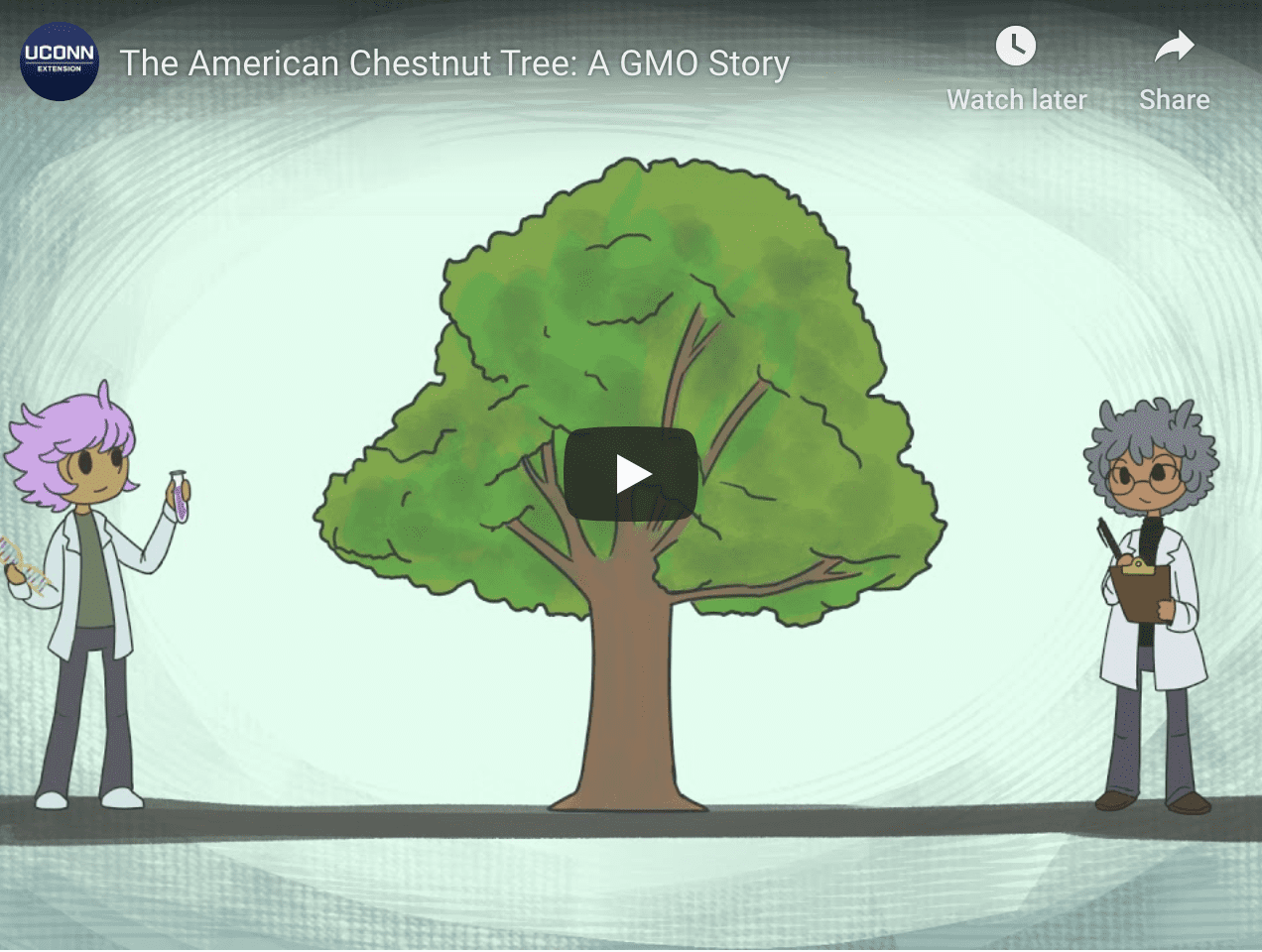 American Chestnut Trees once dominated our landscape, especially in the eastern deciduous forest of the United States. People used the wood from chestnut trees and ate the chestnuts. They also provided environmental benefits. Chestnut trees grew rapidly and up to 100-feet tall. They were found in urban and rural landscapes and grew in dense stands.
American Chestnut Trees once dominated our landscape, especially in the eastern deciduous forest of the United States. People used the wood from chestnut trees and ate the chestnuts. They also provided environmental benefits. Chestnut trees grew rapidly and up to 100-feet tall. They were found in urban and rural landscapes and grew in dense stands.
Then, a pathogenic fungus was introduced in the early 1900s. It caused a blight. The trunk of the tree is girdled by the blight and trees die. The American Chestnut Tree is now nearly extinct because of the blight. The trees that have survived never reach full maturity and are very small.
Forest scientists have searched for ways to introduce blight resistance for years. Crossing Chestnut Trees with other species has not been as successful as hoped. Researchers are using science to try and discover a way to revive these majestic trees. A team at the State University of New York created a Chestnut Tree that is blight resistant using genetic engineering technology. A wheat gene was introduced into the genome for the American Chestnut Tree. This technology can also be used to manage diseases affecting other trees, including the American Elm Tree.
Blight may have destroyed most of the original American Chestnut Trees. Science has the ability to bring back these majestic trees, their beauty, and the ecosystem services they provide.